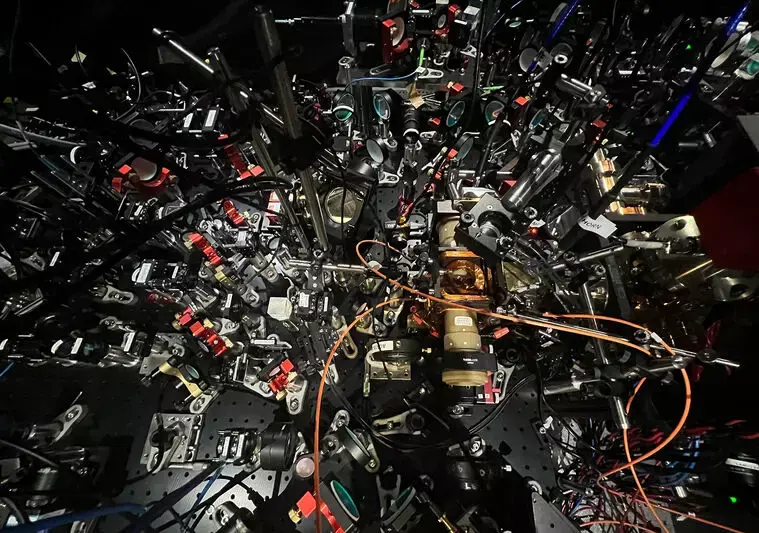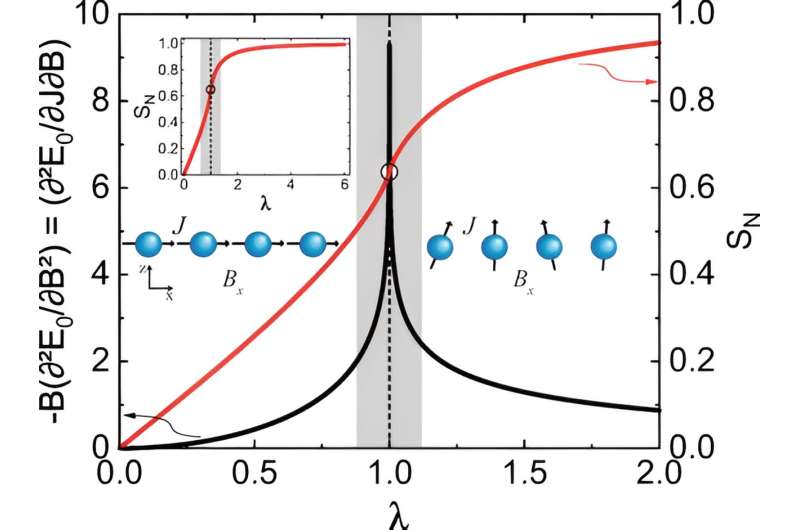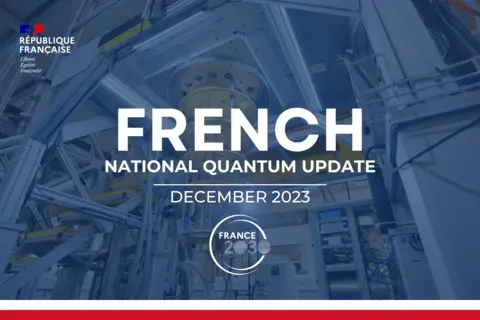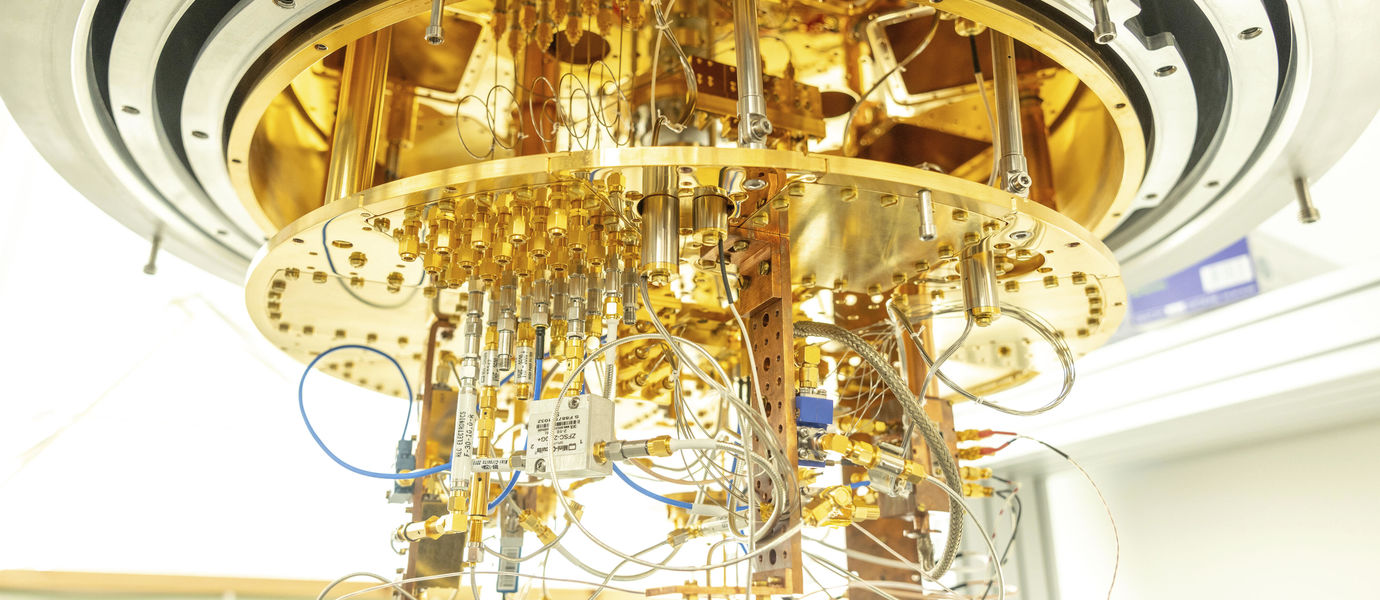ResearchView All Blogs

Quantum Research & Applications: From Theory to Transformation
Diving into quantum research and its applications across sectors.


Quantum Potential & Capabilities: Unraveling the Quantum renaissance
Discovering the potential and capabilities of quantum technologies.

IBM wants to build a 100,000-qubit quantum computer
IBM aims to construct a 100,000-qubit quantum computer within the next decade, marking a significant leap from their current 433-qubit system. This ambitious project will involve partnerships with the University of Tokyo and the University of Chicago.

Quantum Working Groups Push for Near-Term Use Cases
Dive into the collaborative efforts of IBM's Quantum Working Groups as they aim to bring quantum computing closer to real-world applications. These groups focus on healthcare, materials science, high-energy physics, optimization, and sustainability, seeking to leverage quantum algorithms for tangible benefits.

A Whole-Slide Foundation Model for Digital Pathology from Real-World Data
Explore the groundbreaking Prov-GigaPath, a whole-slide pathology foundation model renaissanceizing digital pathology with state-of-the-art performance. Trained on over a billion image tiles, this model is set to transform cancer diagnostics and more.

Machine Learning Uncovers Sperm Whale 'Alphabet,' Providing Insight into Cetacean Communication
Researchers at MIT CSAIL and Project CETI have discovered a sperm whale 'alphabet' using machine learning technologies. The study, titled 'Contextual and Combinatorial Structure in Sperm Whale Vocalizations,' points to key breakthroughs in understanding cetacean communication by analyzing sperm whale codas in context.

ORNL-Supported Research Team Enlists Quantinuum Quantum Computer To Make Real Progress On Quantum Simulation
A research team supported by Oak Ridge National Laboratory (ORNL) has utilized Quantinuums H1-1 quantum computer to simulate complex quantum states, potentially surpassing classical computing capabilities with 70 qubits. This advancement marks a significant step in quantum computing, targeting practical applications in modeling complex systems.

European Commission To Invest 112 Million In AI And Quantum Research And Innovation
The European Commission is set to infuse 112 million into research and innovation across artificial intelligence (AI) and quantum technologies. This funding, part of the Horizon Europes 2023-2024 work programme, aims to advance Europe's competitiveness in these critical high-tech areas.

Quantum Kernels Can Solve Machine Learning Problems That Are Hard for All Classical Methods
IBM researchers have demonstrated a quantum advantage in machine learning, revealing that quantum kernels can identify patterns in data sets that appear as random noise to classical computers, offering a new pathway for quantum machine learning.

Research team takes a fundamental step toward a functioning quantum internet
Unlocking the Quantum Internet: A Leap Forward by Stony Brook University is a captivating blog post discussing a recent breakthrough by Stony Brook University's research team in quantum computing. This post delves into the team's significant advancement towards a functioning quantum internet. By demonstrating a foundational quantum network measurement using room-temperature quantum memories, the team has paved the way for more secure, efficient communication networks and powerful scientific algorithms. This milestone is a critical step in realizing the dream of a quantum internet, showcasing the potential to renaissanceize our approach to data transmission and processing.

Q-CTRL Partners with USGS to Pioneer Quantum Sensing and Computing Applications
LOS ANGELES, January 16, 2024 - In a significant advancement for geophysics with resource exploration impacts, Q-CTRL, a global leader in developing useful quantum technologies through quantum control infrastructure software, has entered a pioneering partnership with the United States Geological Survey (USGS) to explore potential quantum computing and sensing applications for geological sciences.

New Protocol Kills Dead Air for Quantum Communication The technique can boost transmission rates and improve security
Quantum communication transmission rates have long been limited by the dead time inherent to the single-photon detectors used in the field. Now, researchers at LG Electronics in South Korea have unveiled a new protocol that promises to improve transmission rates, as well as heighten transmission security.

Rescale, IonQ Launch Partnership To Accelerate Hybrid Quantum Computing
PRESS RELEASE Following the 2024 Annual Meeting of the World Economic Forum in Davos, Rescale, the leader in high performance computing (HPC) built for the cloud to accelerate engineering innovation and scientific discovery, announced it is teaming with quantum computing leader IonQ to merge the raw processing power of accelerated cloud computing with the unique problem-solving potential of quantum computing. This partnership forges a new path to tackle the most intricate challenges facing product development, healthcare, life sciences, financial services, materials research, logistics optimization, and national research labs.

TQI Exclusive: Photonics Illuminating Quantum Technology: Trends, Challenges And Opportunities
There is a very good chance you are thinking of the gold chandelier often found in a large dilution refrigerator that quantum computing players like IBM and Google use to cool and operate a superconducting qubit. However, there is one core technology that is often overlooked when we talk about quantum computers And thats photonics. Dr. Bob Sutor who spent more than two decades at IBM Research in New York working and leading IBMs efforts in quantum computing knows the large cyrostats very well. Currently Dr. Sutor is the vice president and chief quantum advocate at Infleqtion where at an event he stated:

Redefining Quantum Bits: The Graphene Valley Breakthrough
Dr. Rebekka Garreis, Dr. Chuyao Tong, Dr. Wister Huang and their colleagues in the group of Professors Klaus Ensslin and Thomas Ihn from the Department of Physics at ETH Zurich have been looking into bilayer graphene (BLG) quantum dots, known as a potential platform for spin qubits, to find out if another degree of freedom of BLG can be used to encode quantum information.

World First As Stable Qubit For Quantum Computers Achieved At Room Temperature
Researchers have been able to achieve quantum coherence at room temperature this is the ability of a quantum system to maintain a well-defined state without being affected by external disturbances. This breakthrough is an important step forward in the development of quantum computers. It is easier to work with them if you do not have to cool them down to incredibly low temperatures.


TQI Exclusive: Harvard And QuEra Scientists Say Shuttling Qubits, Parallelism May Power The Ride To Practical Quantum Computing
For a Harvard-led team of researchers, the solution to this challenge, relying on the natural strengths of the design of the neutral atom quantum computer, was to take a group of logical qubits on a train ride to what they called an entanglement zone, where they can perform calculations. Think of this approach as a quantum computational bullet train that brings these all-important qubits to their destination together.

Google wants to solve tricky physics problems with quantum computers
Researchers at Google have created an algorithm that can translate complex physical problems into the language of quantum mechanics, which could make quantum computers able to tackle more tasks.

POLARISqb And Scientist.Com Partner To Offer Online Access To Quantum-Aided Drug Design
POLARISqb was the first company to develop a drug discovery platform that utilizes the well-documented optimization power of todays quantum computers, stated Bill Shipman, CTO and Co-Founder of POLARISqb. We look forward to working with the team at Scientist.com to make this platform available to their vast network of scientists and researchers, who can use our tools to accelerate the search for novel drug candidates. POLARISqb uses quantum annealing computers that complete calculations more than 500x faster than conventional computers

SandboxAQ, Carahsoft Make Quantum Accessible to Public Sector
AI and quantum software-as-a-service provider SandboxAQ has already won several government contracts. These include researching quantum navigation systems with the U.S. Air Force and providing its quantum-resistant cryptography solution SandboxAQ Security Suite to the U.S. Defense Information Systems Agency (DISA) and the U.S. Department of Health and Human Services.

DARPA RESEARCH LEADS TO GROUNDBREAKING DISCOVERY IN QUANTUM COMPUTING, DEVELOPING THE WORLDS FIRST LOGICAL QUBIT CIRCUIT
Researchers working with the Optimization with Noisy Intermediate-Scale Quantum (ONISQ) program say they have created the worlds first quantum circuit using logical quantum bits (qubits). The innovation marks a significant stride towards fault-tolerant quantum computing, promising to renaissanceize the design of quantum computer processors.

Researchers propose conditions for maximizing quantum entanglement
Entanglement is a property of quantum physics that is manifested when two or more systems interact in such a way that their quantum states cannot be described independently. In the terminology of quantum physics, they are said to be entangled, i.e. strongly correlated. Entanglement is of paramount importance to quantum computing. The greater the entanglement, the more optimized and efficient the quantum computer.

Quantum Computing And Chill? NISQRC Algorithm Could Allow QCs To Take On Streaming Data
Researchers have achieved a significant advance in real-time quantum computing with the development of Noisy Intermediate Scale Quantum Reservoir Computing, NISQRC, according to a study posted on the pre-print server ArXiv. This novel algorithm enables quantum machines to learn from continuously flowing data streams, overcoming a major hurdle that has previously limited their applicability to dynamic real-world scenarios.

French National Quantum Report December 2023
Its been an eventful year for Frances quantum experts and enthusiasts. We have seen French scientists significantly advance research that is bringing the quantum era closer and closer. French entrepreneurs have built businesses that are in global leadership positions for quantum tech.

Governments quantum efforts are shifting to a near-term strategy
Proposed updates to the federal governments legal framework on quantum technology and agency research and development efforts have both moved to prioritize the near-term impacts of what has long been seen as a still-emerging technology. On Thursday, government officials spoke in Palo Alto about the growing presence of quantum information systems research and development at a federal level, illuminating both the congressional and agency-led initiatives that stand to push the governments QIST agenda further.

Nobel Prize Honors Inventors of Quantum Dot Nanoparticles
The Nobel Prize in Chemistry has been awarded to three researchers who harnessed the quantum behaviors of semiconductor nanocrystals.

More on Logical Qubit Study: DARPA-Funded Research Leads to Quantum Computing Advance
Critical Quote: The homogeneity of Rydberg qubits allows them to scale rapidly and also allows them to be manipulated and moved around easily using lasers on a quantum circuit. This overcomes the current error-prone methods of performing qubit operations by having to connect them sequentially, which propagates errors throughout the chip. Dr. Mukund Vengalattore, ONISQ program manager, DARPAs Defense Sciences Office.

